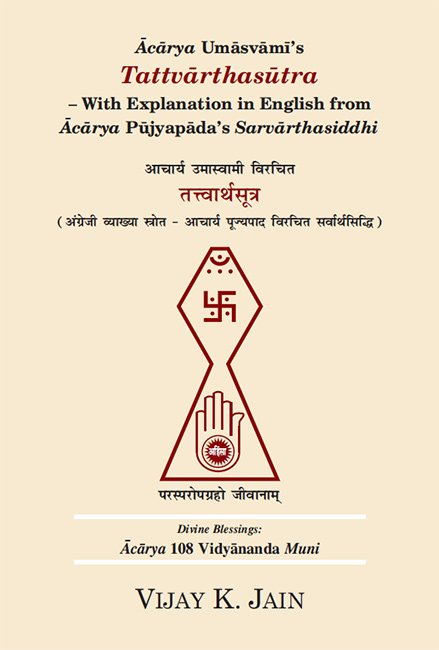Tattvartha Sutra (with commentary)
by Vijay K. Jain | 2018 | 130,587 words | ISBN-10: 8193272625 | ISBN-13: 9788193272626
This page describes the the mountain range of manushottara which is verse 3.35 of the English translation of the Tattvartha Sutra which represents the essentials of Jainism and Jain dharma and deals with the basics on Karma, Cosmology, Ethics, Celestial beings and Liberation. The Tattvarthasutra is authorative among both Digambara and Shvetambara. This is verse 35 of the chapter The Lower World and the Middle World and includes an extensive commentary.
Verse 3.35 - The the mountain range of Mānuṣottara
Sanskrit text, Unicode transliteration and English translation of Tattvartha sūtra 3.35:
प्राङ्मानुषोत्तरान्मनुष्याः ॥ ३.३५ ॥
prāṅmānuṣottarānmanuṣyāḥ || 3.35 ||
The human beings are only up to the mountain range of Mānuṣottara. (35)
Hindi Anvayarth:
अन्वयार्थ: मानुषोत्तर पर्वत तक अर्थात् अढ़ाई द्वीप में ही मनुष्य होते हैं-मानुषोत्तर पर्वत से परे ऋद्विधारी मुनि या विद्याधर भी नहीं जा सकते।
Anvayartha: manushottara parvata taka arthat adha़ाi dvipa mem hi manushya hote haim-manushottara parvata se pare ridvidhari muni ya vidyadhara bhi nahim ja sakate |
Explanation in English from Ācārya Pūjyapāda’s Sarvārthasiddhi:
Why is it stated that there are two Himavān mountains, etc., only in Puṣkarārdha and not in the entire Puṣkaradvīpa?
The mountain range of Mānuṣottara runs, like a bangle, in the middle of Puṣkaradvīpa dividing it into two parts. Human beings are found only inside this mountain range and not beyond it. Hence Puṣkaradvīpa has no division into regions beyond this mountain range. Neither ‘vidyādhara’ (those gifted with extraordinary powers) nor ascetics with ‘ṛddhi’ (special attainment) go beyond this dividing mountain range. There are, however, three exceptions. 1) The human being, who is to be born after death outside the human region (not, of course, as a human being), effects the exit of the spatial units of his soul beyond the human region, just at the time of transit before his death–māraṇāntika-samudghāta. 2) The being (not, of course, a human being) living beyond the mountain range of Mānuṣottara who is to be reborn as a human being after death–on fruition of the age and name-karma of a human being–stays outside the human region until the time of entry into the human region just before death. 3) Kevali-samudghāta; the Omniscient emanates from his body the spatial units of his soul, without wholly discarding the body, for the purpose of levelling down the duration of the other three non-destructivc karmas to that of the age-karma. The soul fills up the entire universe and contracts back to the size of the body in eight instants, just prior to attaining liberation.
Since human beings are found only inside it, the name Mānuṣottara is significant. It is now clear that human beings reside only in the two and a half continents commencing from Jambūdvīpa and in the two oceans.
